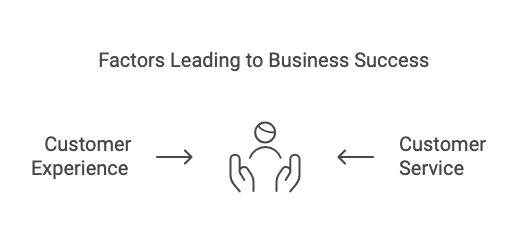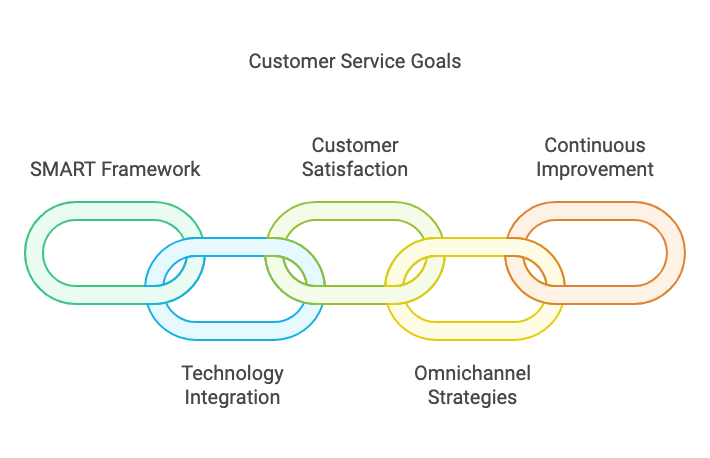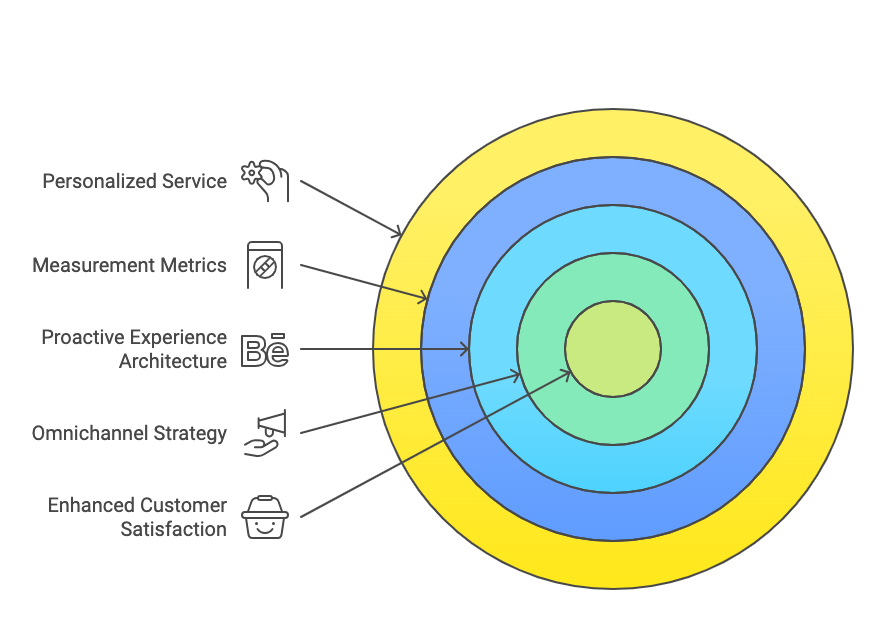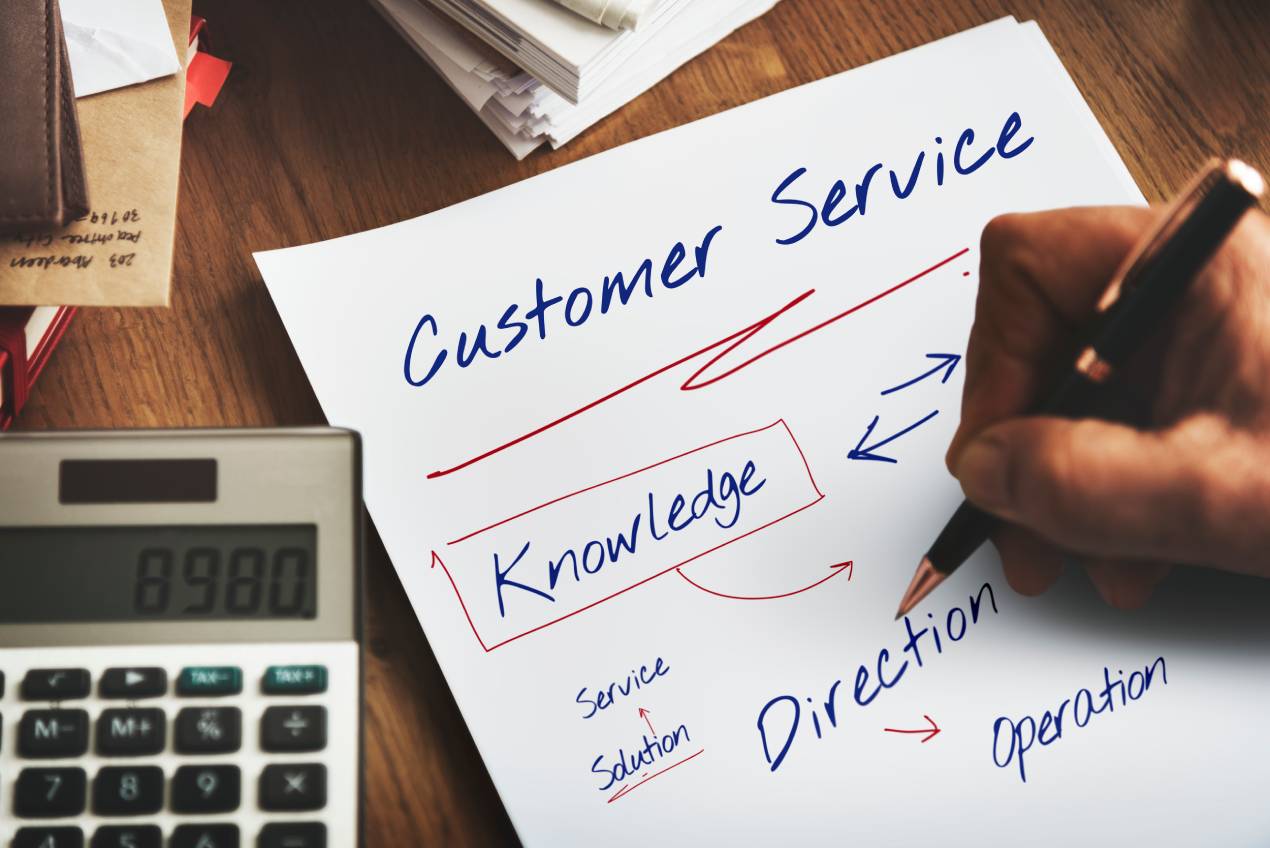Customer service is the heartbeat of any successful business. In a world brimming with choices, delivering exemplary service is pivotal. Studies show that 86% of buyers will pay more for great customer experience.
Establishing clear customer service benchmarks ensures alignment with your company’s vision.
Goals should resonate not just with your team, but with your customers too.

In this guide, we’ll explore effective strategies for setting these benchmarks. You’ll learn about the SMART framework and how to engage your team.
Let’s empower your business to exceed customer expectations and foster lasting loyalty.
Table of Contents
Significance of Establishing Customer Service Goals
Setting customer service goals aligns the team to a common purpose. This unified direction boosts performance across all activities. By achieving targets, the business achieves better outcomes.
Clear, measurable goals drive consistent improvement. They help businesses adapt to ever-changing customer needs. This adaptation enhances overall customer experience significantly.

Implementing SMART goals aids in improving customer loyalty and aligns with customer service policies that drive loyalty. It also reduces agent turnover by boosting team morale. Happy teams naturally foster customer retention.
Regular performance evaluations guide necessary goal adjustments. Feedback from customer interactions allows for agile service delivery. Innovation remains at the forefront of service strategies.
Achieving these goals creates an empowered work environment. Employees become motivated and equipped for exceptional service. This results in higher Customer Satisfaction Scores, a pivotal success metric.
Goals for Customer Service: An Overview
| Goal Aspect | Benefit |
|---|---|
| SMART Goals | Enhance loyalty and retention |
| Measurable Targets | Drive continuous enhancement |
| Performance Reviews | Inform service strategy adjustments |
Aligning Goals with Company Vision
Aligning customer service goals with your company’s vision is essential. It ensures consistency in service delivery standards. This alignment fosters business growth and success.
Customer service goals help improve customer retention rates. Thriving businesses often see income boosts from loyal customers. Defining clear goals becomes a competitive advantage.
The magic lies in setting smart, achievable goals. They inspire teamwork and align efforts across departments.
Time-bound goals create urgency within the team. There is a push to prioritize and meet deadlines. Everyone benefits from a focused service approach.
Regular evaluation of these goals is crucial. It allows for strategic adjustments and improvements. This proactive approach keeps service teams adaptable.
Keep these principles in mind to elevate your customer service strategy. Aligned customer service objectives not only meet expectations but exceed them. A customer-focused vision drives exceptional service delivery.
Understanding Customer Needs and Expectations
Understanding customer needs and expectations is vital. A whopping 63% of consumers want personalized service.

They expect agents to know their unique requirements. Aligning goals with this expectation enhances customer service outcomes.
Customer service goals should boost satisfaction. Metrics like CSAT and NPS measure this effectively. Achieving high scores reflects excellent customer service delivery.
This alignment also elevates agents to proactive experience architects. They’re not just solving problems but crafting memorable interactions.
Implementing an omnichannel strategy meets diverse needs. It provides seamless experiences across communication channels.
Customers appreciate the flexibility and accessibility this approach offers. Successful customer service teams prioritize and manage these interactions efficiently.
Here’s a quick table:
| Metric | Description |
|---|---|
| CSAT | Measures customer satisfaction |
| NPS | Gauges customer loyalty |
Understanding customer needs can transform your service strategy. Make it your mission to truly listen and respond. Exceptional service is achievable and it begins with understanding.
Introduction to the SMART Framework
The SMART framework enhances customer service goal-setting. It ensures objectives are Specific, Measurable, Achievable, Relevant, and Time-bound.
This clarity guides service teams in understanding responsibilities. Each goal aids in improving customer satisfaction and can be measured. Regular reviews of SMART goals ensure they adjust to feedback and changes.
Specific: Defining Clear Objectives
Specific goals prevent misguided efforts in service teams. Align outcomes with business needs by asking critical questions.
Determine metrics and KPIs for measuring success. Articulate clearly what actions are needed to meet targets. Coordinate goals with other departments for greater success.
Measurable: Tracking Progress Effectively
Clear metrics track customer service goal progress. Regular KPI monitoring highlights areas needing improvement.
Key metrics include Customer Satisfaction Scores and response times. Utilize customer software like ThriveDesk to streamline tracking. For instance, aim to improve response rates by 20%.
Achievable: Setting Realistic Targets
Achievable goals keep customer service teams motivated. Aim for a one-hour response time, not real-time responses. Goals should be ambitious yet attainable to prevent demotivation.
The SMART framework stresses the importance of achievable goals. Achievable targets foster a culture of success and progress.
Relevant: Ensuring Business Context
Relevant goals align with a company’s core values. They enhance staff understanding of their role in success. Prioritize tasks that improve team performance and address objectives.
Time-bound: Creating a Sense of Urgency
Time-bound objectives create urgency and efficiency. Set deadlines for precise progress monitoring and adaptations. Use time-bound goals like gathering feedback within set frames.
Break down long-term goals into manageable deadlines. Clear timeframes focus teams on exceptional customer experiences.
Here’s a breakdown of the SMART framework:
| Criterion | Description |
|---|---|
| Specific | Clear and focused objectives |
| Measurable | Metrics for tracking progress and making improvements |
| Achievable | Realistic yet ambitious targets |
| Relevant | Goals align with business values and needs |
| Time-bound | Defined deadlines for urgent and efficient task management |
Involving Team Members in Goal Setting
Involving team members in goal setting is transformative. It fosters camaraderie and mutual support. Teammates easily assist each other when needed.
This approach promotes collaboration on customer issues. Solutions become faster and more effective.
Team members feel more committed to customer satisfaction. Engaging them in goal setting strengthens the service culture. They share common objectives, enhancing job satisfaction.
It encourages a sense of ownership and dedication. This positively influences customer experience.
Here’s how teamwork through goals improves service:
- Improved Communication: Clearly defined goals enhance communication.
- Efficient Response: Agents respond more efficiently to queries.
- Effective Solutions: Collaborative efforts yield faster solutions.
- Boosted Satisfaction: Commitment boosts job satisfaction among representatives.
Consider this table showing benefits:
| Benefit | Impact on Service |
|---|---|
| Improved Communication | Quicker Query Resolution |
| Efficient Responses | Higher Customer Satisfaction Scores |
| Effective Solutions | Boosted Customer Loyalty |
Align your teams. Set clear, collaborative goals today.
Leveraging Technology for Enhanced Customer Insights
Understanding customer behavior transforms customer service strategies. Leveraging technology helps in gathering essential customer data.
This data offers insights into preferences and needs. Personalizing interactions becomes seamless and engaging.
Automated workflows simplify customer service operations. Predefined rules reduce errors, improving overall consistency.
Technology aids in tracking customer interactions. This enables the identification of trends and data-driven decisions. Resultantly, service performance sees a significant boost.
Implementing a unified inbox system centralizes customer communication. This ensures better organization and smoother team operations.
Clear conversations elevate customer satisfaction scores. It redefines how customer service teams collaborate.
Here are the key benefits of technology in customer service:
| Benefits | Impact |
|---|---|
| 24/7 Support | Boosts customer satisfaction |
| Reduced Errors | Enhances service consistency |
| Data-Driven Decisions | Improves service performance |
Offering 24/7 support through technology satisfies customer expectations. Customers appreciate assistance tailored to their schedules.
Incorporating these technological strategies helps meet smart goals. It’s all about creating an exceptional customer service experience.
Key Customer Service Benchmarks to Consider
Setting clear goals is vital for customer service. These goals should be specific and measurable.
For instance, aim for a set response time for inquiries. Customer service scores and churn rates are key metrics. These help track progress towards defined objectives.
Enhancing Customer Satisfaction Scores
Customer satisfaction drives a company’s success. Satisfied customers often become repeat buyers. They also promote the business through word-of-mouth.
Regular customer feedback highlights improvement areas. High satisfaction scores are crucial for maintaining growth.
Key Metrics:
- Customer Satisfaction Score (CSAT)
- Net Promoter Score (NPS)
Reducing Customer Wait Times
Long wait times frustrate customers. This can lead to abandoned service processes. An omnichannel approach streamlines responses.
It allows customers to choose their preferred contact method. Average wait times can be managed by displaying and monitoring them.
Target:
- Improve CSAT scores for response time by 15% in six months.
Implementing Omnichannel Customer Service Strategies
Omnichannel strategies align customer touchpoints seamlessly. This provides a consistent customer experience.
Advantages of Omnichannel:
- Seamless interaction across platforms.
- Personalized customer experiences.
- Enhanced issue resolution speed.
Monitoring Progress and Making Adjustments
Monitoring progress in customer service is crucial. Regularly check key performance indicators (KPIs) to track goals. This evaluation ensures objectives align with customer needs.
If progress is slow, consider revising action plans. Solutions may include hiring extra customer service agents or improving response systems.
Accountability boosts goal achievements. Assign clear roles and set strict deadlines. This practice encourages team ownership and timely completion of tasks. For enhanced effectiveness, review the table below:
| KPI | Description |
|---|---|
| Average Response Time | Time taken to first respond to a customer |
| Customer Satisfaction Score | Rating provided by the customers |
| Customer Retention Rate | Percentage of customers retained over time |
Evaluating and adjusting regularly ensures a focused approach toward exceptional service. Reaching these goals leads to happy, loyal customers.
Fostering a Culture of Continuous Improvement
Fostering a culture of continuous improvement is vital for customer service success. Establishing clear goals for customer service allows teams to pinpoint areas to improve.
It encourages constant learning from past mistakes, fostering growth. Regularly reviewing progress helps catch potential issues early, preventing escalation.
Setting actionable goals ensures the customer support team aligns with the company’s mission. This alignment enhances overall service quality and customer satisfaction. Achieving these goals increases customer loyalty and repeat business.
Emphasizing continuous learning is key to refining skills. By valuing feedback, customer service agents adapt to changing industry dynamics quickly.
Retaining valuable feedback also supports improvements in customer service operations. Below is a simple table showing potential goals to consider for continuous improvement:
| Goal Type | Example |
|---|---|
| Measurable Goals | Increase satisfaction scores |
| Achievable Goals | Reduce complaints by 10% |
| Time Frame | Resolve issues in 24 hours |
To keep evolving, customer service teams must adapt and innovate continuously. Encourage customer interactions to gather insights and meet customer expectations consistently.





